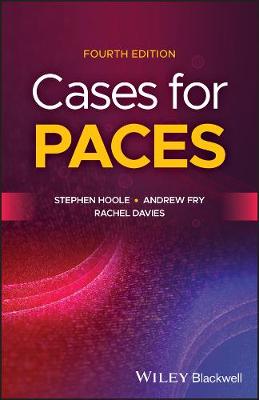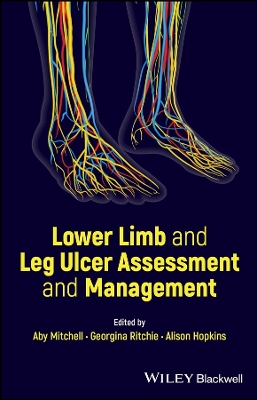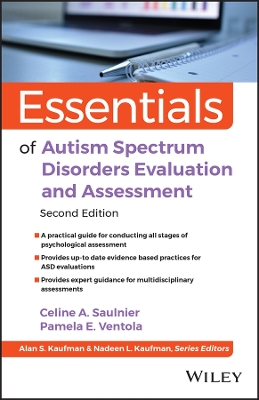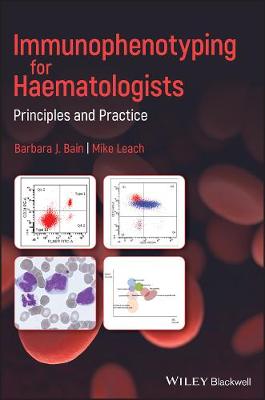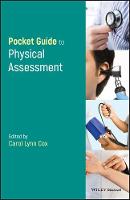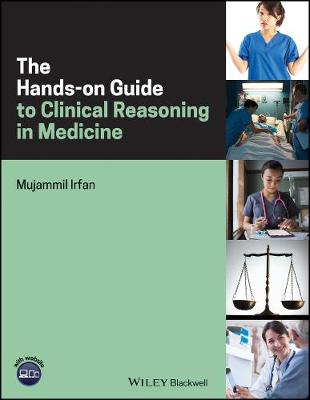Medical Decision Making
 -15%
portes grátis
-15%
portes grátis
Medical Decision Making
Higgins, Michael C.; Sox, Harold C.; Sanders Schmidler, Gillian; Owens, Douglas K.
John Wiley and Sons Ltd
02/2024
368
Mole
Inglês
9781119627807
15 a 20 dias
Descrição não disponível.
Foreword xi
Preface xiii
1 Introduction 1
1.1 How may I be thorough yet efficient when considering the possible causes of my patient's problems? 1
1.2 How do I characterize the information I have gathered during the medical interview and physical examination? 1
1.3 How do I interpret new diagnostic information? 3
1.4 How do I select the appropriate diagnostic test? 4
1.5 How do I choose among several risky treatment alternatives? 4
2 Differential diagnosis 5
2.1 An introduction 5
2.2 How clinicians make a diagnosis 5
2.3 The principles of hypothesis- driven differential diagnosis 8
2.4 An extended example 14
Bibliography 16
3 Probability: quantifying uncertainty 18
3.1 Uncertainty and probability in medicine 18
3.2 How to determine a probability 21
3.3 Sources of error in using personal experience to estimate the probability 23
3.4 The role of empirical evidence in quantifying uncertainty 30
3.5 Limitations of published studies of disease prevalence 35
3.6 Taking the special characteristics of the patient into account when determining probabilities 36
Bibliography 37
4 Interpreting new information: Bayes' theorem 38
4.1 Introduction 38
4.2 Conditional probability defined 40
4.3 Bayes' theorem 41
4.4 The odds ratio form of Bayes' theorem 45
4.5 Lessons to be learned from using Bayes' theorem 50
4.6 The assumptions of Bayes' theorem 52
4.7 Using Bayes' theorem to interpret a sequence of tests 54
4.8 Using Bayes' theorem when many diseases are under consideration 55
Bibliography 57
5 Measuring the accuracy of clinical findings 58
5.1 A language for describing test results 58
5.2 The measurement of diagnostic test performance 62
5.3 How to measure diagnostic test performance: a hypothetical example 67
5.4 Pitfalls of predictive value 69
5.5 How to perform a high quality study of diagnostic test performance 70
5.6 Spectrum bias in the measurement of test performance 74
5.7 When to be concerned about inaccurate measures of test performance 79
5.8 Test results as a continuous variable: the ROC curve 81
5.9 Combining data from studies of test performance: the systematic review and meta- analysis 87
A.5.1 Appendix: derivation of the method for using an ROC curve to choose the definition of an abnormal test result 89
Bibliography 91
6 Decision trees - representing the structure of a decision problem 93
6.1 Introduction 93
6.2 Key concepts and terminology 93
6.3 Constructing the decision tree for a hypothetical decision problem 96
6.4 Constructing the decision tree for a medical decision problem 103
Epilogue 112
Bibliography 112
7 Decision tree analysis 113
7.1 Introduction 113
7.2 Folding- back operation 114
7.3 Sensitivity analysis 126
Epilogue 133
Bibliography 133
8 Outcome utility - representing risk attitudes 134
8.1 Introduction 134
8.2 What are risk attitudes? 135
8.3 Demonstration of risk attitudes in a medical context 136
8.4 General observations about outcome utilities 147
8.5 Determining outcome utilities - underlying concepts 151
Epilogue 157
Bibliography 158
9 Outcome utilities - clinical applications 159
9.1 Introduction 159
9.2 A parametric model for outcome utilities 160
9.3 Incorporating risk attitudes into clinical policies 172
9.4 Helping patients communicate their preferences 181
Epilogue 185
A.9.1 Exponential utility model parameter nomogram 186
Bibliography 188
10 Outcome utilities - adjusting for the quality of life 189
10.1 Introduction 189
10.2 Example - why the quality of life matters 190
10.3 Quality- lifetime tradeoff models 193
10.4 Quality- survival tradeoff models 203
10.5 What does it all mean? - an extended example 209
Epilogue 217
Bibliography 217
11 Survival models: representing uncertainty about the length of life 218
11.1 Introduction 218
11.2 Survival model basics 219
11.3 Medical example - survival after breast cancer recurrence 226
11.4 Exponential survival model 228
11.5 Actuarial survival models 232
11.6 Two- part survival models 235
Epilogue 247
Bibliography 247
12 Markov models 248
12.1 Introduction 248
12.2 Markov model basics 249
12.3 Determining transition probabilities 259
12.4 Markov model analysis - an overview 269
Epilogue 277
Bibliography 277
13 Selection and interpretation of diagnostic tests 278
13.1 Introduction 278
13.2 Four principles of decision making 279
13.3 The threshold probability for treatment 281
13.4 Threshold probabilities for testing 288
13.5 Clinical application of the threshold model of decision making 293
13.6 Accounting for the non- diagnostic effects of undergoing a test 296
13.7 Sensitivity analysis 298
13.8 Decision curve analysis 300
Bibliography 302
14 Medical decision analysis in practice: advanced methods 303
14.1 An overview of advanced modeling techniques 303
14.2 Use of medical decision- making concepts to analyze a policy problem: the cost- effectiveness of screening for HIV 305
14.3 Use of medical decision- making concepts to analyze a clinical diagnostic problem: strategies to diagnose tumors in the lung 313
14.4 Calibration and validation of decision models 317
14.5 Use of complex models for individual- patient decision making 319
Bibliography 321
15 Cost- effectiveness analysis 323
15.1 The clinician's conflicting roles: patient advocate member of society and entrepreneur 323
15.2 Cost- effectiveness analysis: a method for comparing management strategies 325
15.3 Cost-benefit analysis: a method for measuring the net benefit of medical services 330
15.4 Methodological best practices for cost- effectiveness analysis 332
15.5 Reference case for cost- effectiveness analysis 333
15.6 Impact inventory for cataloguing consequences 334
15.7 Measuring the health effects of medical care 334
15.8 Measuring the costs of medical care 335
15.9 Interpretation of cost- effectiveness analysis and use in decision making 337
15.10 Limitations of cost- effectiveness analyses 337
Bibliography 338
Index 340
Preface xiii
1 Introduction 1
1.1 How may I be thorough yet efficient when considering the possible causes of my patient's problems? 1
1.2 How do I characterize the information I have gathered during the medical interview and physical examination? 1
1.3 How do I interpret new diagnostic information? 3
1.4 How do I select the appropriate diagnostic test? 4
1.5 How do I choose among several risky treatment alternatives? 4
2 Differential diagnosis 5
2.1 An introduction 5
2.2 How clinicians make a diagnosis 5
2.3 The principles of hypothesis- driven differential diagnosis 8
2.4 An extended example 14
Bibliography 16
3 Probability: quantifying uncertainty 18
3.1 Uncertainty and probability in medicine 18
3.2 How to determine a probability 21
3.3 Sources of error in using personal experience to estimate the probability 23
3.4 The role of empirical evidence in quantifying uncertainty 30
3.5 Limitations of published studies of disease prevalence 35
3.6 Taking the special characteristics of the patient into account when determining probabilities 36
Bibliography 37
4 Interpreting new information: Bayes' theorem 38
4.1 Introduction 38
4.2 Conditional probability defined 40
4.3 Bayes' theorem 41
4.4 The odds ratio form of Bayes' theorem 45
4.5 Lessons to be learned from using Bayes' theorem 50
4.6 The assumptions of Bayes' theorem 52
4.7 Using Bayes' theorem to interpret a sequence of tests 54
4.8 Using Bayes' theorem when many diseases are under consideration 55
Bibliography 57
5 Measuring the accuracy of clinical findings 58
5.1 A language for describing test results 58
5.2 The measurement of diagnostic test performance 62
5.3 How to measure diagnostic test performance: a hypothetical example 67
5.4 Pitfalls of predictive value 69
5.5 How to perform a high quality study of diagnostic test performance 70
5.6 Spectrum bias in the measurement of test performance 74
5.7 When to be concerned about inaccurate measures of test performance 79
5.8 Test results as a continuous variable: the ROC curve 81
5.9 Combining data from studies of test performance: the systematic review and meta- analysis 87
A.5.1 Appendix: derivation of the method for using an ROC curve to choose the definition of an abnormal test result 89
Bibliography 91
6 Decision trees - representing the structure of a decision problem 93
6.1 Introduction 93
6.2 Key concepts and terminology 93
6.3 Constructing the decision tree for a hypothetical decision problem 96
6.4 Constructing the decision tree for a medical decision problem 103
Epilogue 112
Bibliography 112
7 Decision tree analysis 113
7.1 Introduction 113
7.2 Folding- back operation 114
7.3 Sensitivity analysis 126
Epilogue 133
Bibliography 133
8 Outcome utility - representing risk attitudes 134
8.1 Introduction 134
8.2 What are risk attitudes? 135
8.3 Demonstration of risk attitudes in a medical context 136
8.4 General observations about outcome utilities 147
8.5 Determining outcome utilities - underlying concepts 151
Epilogue 157
Bibliography 158
9 Outcome utilities - clinical applications 159
9.1 Introduction 159
9.2 A parametric model for outcome utilities 160
9.3 Incorporating risk attitudes into clinical policies 172
9.4 Helping patients communicate their preferences 181
Epilogue 185
A.9.1 Exponential utility model parameter nomogram 186
Bibliography 188
10 Outcome utilities - adjusting for the quality of life 189
10.1 Introduction 189
10.2 Example - why the quality of life matters 190
10.3 Quality- lifetime tradeoff models 193
10.4 Quality- survival tradeoff models 203
10.5 What does it all mean? - an extended example 209
Epilogue 217
Bibliography 217
11 Survival models: representing uncertainty about the length of life 218
11.1 Introduction 218
11.2 Survival model basics 219
11.3 Medical example - survival after breast cancer recurrence 226
11.4 Exponential survival model 228
11.5 Actuarial survival models 232
11.6 Two- part survival models 235
Epilogue 247
Bibliography 247
12 Markov models 248
12.1 Introduction 248
12.2 Markov model basics 249
12.3 Determining transition probabilities 259
12.4 Markov model analysis - an overview 269
Epilogue 277
Bibliography 277
13 Selection and interpretation of diagnostic tests 278
13.1 Introduction 278
13.2 Four principles of decision making 279
13.3 The threshold probability for treatment 281
13.4 Threshold probabilities for testing 288
13.5 Clinical application of the threshold model of decision making 293
13.6 Accounting for the non- diagnostic effects of undergoing a test 296
13.7 Sensitivity analysis 298
13.8 Decision curve analysis 300
Bibliography 302
14 Medical decision analysis in practice: advanced methods 303
14.1 An overview of advanced modeling techniques 303
14.2 Use of medical decision- making concepts to analyze a policy problem: the cost- effectiveness of screening for HIV 305
14.3 Use of medical decision- making concepts to analyze a clinical diagnostic problem: strategies to diagnose tumors in the lung 313
14.4 Calibration and validation of decision models 317
14.5 Use of complex models for individual- patient decision making 319
Bibliography 321
15 Cost- effectiveness analysis 323
15.1 The clinician's conflicting roles: patient advocate member of society and entrepreneur 323
15.2 Cost- effectiveness analysis: a method for comparing management strategies 325
15.3 Cost-benefit analysis: a method for measuring the net benefit of medical services 330
15.4 Methodological best practices for cost- effectiveness analysis 332
15.5 Reference case for cost- effectiveness analysis 333
15.6 Impact inventory for cataloguing consequences 334
15.7 Measuring the health effects of medical care 334
15.8 Measuring the costs of medical care 335
15.9 Interpretation of cost- effectiveness analysis and use in decision making 337
15.10 Limitations of cost- effectiveness analyses 337
Bibliography 338
Index 340
Este título pertence ao(s) assunto(s) indicados(s). Para ver outros títulos clique no assunto desejado.
medical interviews; physical examinations; patient decision making; patient problems; bayes theorem; improve patient outcomes; patient uncertainty; diagnose patients accurately; medical practice policies; clinical practice reference
Foreword xi
Preface xiii
1 Introduction 1
1.1 How may I be thorough yet efficient when considering the possible causes of my patient's problems? 1
1.2 How do I characterize the information I have gathered during the medical interview and physical examination? 1
1.3 How do I interpret new diagnostic information? 3
1.4 How do I select the appropriate diagnostic test? 4
1.5 How do I choose among several risky treatment alternatives? 4
2 Differential diagnosis 5
2.1 An introduction 5
2.2 How clinicians make a diagnosis 5
2.3 The principles of hypothesis- driven differential diagnosis 8
2.4 An extended example 14
Bibliography 16
3 Probability: quantifying uncertainty 18
3.1 Uncertainty and probability in medicine 18
3.2 How to determine a probability 21
3.3 Sources of error in using personal experience to estimate the probability 23
3.4 The role of empirical evidence in quantifying uncertainty 30
3.5 Limitations of published studies of disease prevalence 35
3.6 Taking the special characteristics of the patient into account when determining probabilities 36
Bibliography 37
4 Interpreting new information: Bayes' theorem 38
4.1 Introduction 38
4.2 Conditional probability defined 40
4.3 Bayes' theorem 41
4.4 The odds ratio form of Bayes' theorem 45
4.5 Lessons to be learned from using Bayes' theorem 50
4.6 The assumptions of Bayes' theorem 52
4.7 Using Bayes' theorem to interpret a sequence of tests 54
4.8 Using Bayes' theorem when many diseases are under consideration 55
Bibliography 57
5 Measuring the accuracy of clinical findings 58
5.1 A language for describing test results 58
5.2 The measurement of diagnostic test performance 62
5.3 How to measure diagnostic test performance: a hypothetical example 67
5.4 Pitfalls of predictive value 69
5.5 How to perform a high quality study of diagnostic test performance 70
5.6 Spectrum bias in the measurement of test performance 74
5.7 When to be concerned about inaccurate measures of test performance 79
5.8 Test results as a continuous variable: the ROC curve 81
5.9 Combining data from studies of test performance: the systematic review and meta- analysis 87
A.5.1 Appendix: derivation of the method for using an ROC curve to choose the definition of an abnormal test result 89
Bibliography 91
6 Decision trees - representing the structure of a decision problem 93
6.1 Introduction 93
6.2 Key concepts and terminology 93
6.3 Constructing the decision tree for a hypothetical decision problem 96
6.4 Constructing the decision tree for a medical decision problem 103
Epilogue 112
Bibliography 112
7 Decision tree analysis 113
7.1 Introduction 113
7.2 Folding- back operation 114
7.3 Sensitivity analysis 126
Epilogue 133
Bibliography 133
8 Outcome utility - representing risk attitudes 134
8.1 Introduction 134
8.2 What are risk attitudes? 135
8.3 Demonstration of risk attitudes in a medical context 136
8.4 General observations about outcome utilities 147
8.5 Determining outcome utilities - underlying concepts 151
Epilogue 157
Bibliography 158
9 Outcome utilities - clinical applications 159
9.1 Introduction 159
9.2 A parametric model for outcome utilities 160
9.3 Incorporating risk attitudes into clinical policies 172
9.4 Helping patients communicate their preferences 181
Epilogue 185
A.9.1 Exponential utility model parameter nomogram 186
Bibliography 188
10 Outcome utilities - adjusting for the quality of life 189
10.1 Introduction 189
10.2 Example - why the quality of life matters 190
10.3 Quality- lifetime tradeoff models 193
10.4 Quality- survival tradeoff models 203
10.5 What does it all mean? - an extended example 209
Epilogue 217
Bibliography 217
11 Survival models: representing uncertainty about the length of life 218
11.1 Introduction 218
11.2 Survival model basics 219
11.3 Medical example - survival after breast cancer recurrence 226
11.4 Exponential survival model 228
11.5 Actuarial survival models 232
11.6 Two- part survival models 235
Epilogue 247
Bibliography 247
12 Markov models 248
12.1 Introduction 248
12.2 Markov model basics 249
12.3 Determining transition probabilities 259
12.4 Markov model analysis - an overview 269
Epilogue 277
Bibliography 277
13 Selection and interpretation of diagnostic tests 278
13.1 Introduction 278
13.2 Four principles of decision making 279
13.3 The threshold probability for treatment 281
13.4 Threshold probabilities for testing 288
13.5 Clinical application of the threshold model of decision making 293
13.6 Accounting for the non- diagnostic effects of undergoing a test 296
13.7 Sensitivity analysis 298
13.8 Decision curve analysis 300
Bibliography 302
14 Medical decision analysis in practice: advanced methods 303
14.1 An overview of advanced modeling techniques 303
14.2 Use of medical decision- making concepts to analyze a policy problem: the cost- effectiveness of screening for HIV 305
14.3 Use of medical decision- making concepts to analyze a clinical diagnostic problem: strategies to diagnose tumors in the lung 313
14.4 Calibration and validation of decision models 317
14.5 Use of complex models for individual- patient decision making 319
Bibliography 321
15 Cost- effectiveness analysis 323
15.1 The clinician's conflicting roles: patient advocate member of society and entrepreneur 323
15.2 Cost- effectiveness analysis: a method for comparing management strategies 325
15.3 Cost-benefit analysis: a method for measuring the net benefit of medical services 330
15.4 Methodological best practices for cost- effectiveness analysis 332
15.5 Reference case for cost- effectiveness analysis 333
15.6 Impact inventory for cataloguing consequences 334
15.7 Measuring the health effects of medical care 334
15.8 Measuring the costs of medical care 335
15.9 Interpretation of cost- effectiveness analysis and use in decision making 337
15.10 Limitations of cost- effectiveness analyses 337
Bibliography 338
Index 340
Preface xiii
1 Introduction 1
1.1 How may I be thorough yet efficient when considering the possible causes of my patient's problems? 1
1.2 How do I characterize the information I have gathered during the medical interview and physical examination? 1
1.3 How do I interpret new diagnostic information? 3
1.4 How do I select the appropriate diagnostic test? 4
1.5 How do I choose among several risky treatment alternatives? 4
2 Differential diagnosis 5
2.1 An introduction 5
2.2 How clinicians make a diagnosis 5
2.3 The principles of hypothesis- driven differential diagnosis 8
2.4 An extended example 14
Bibliography 16
3 Probability: quantifying uncertainty 18
3.1 Uncertainty and probability in medicine 18
3.2 How to determine a probability 21
3.3 Sources of error in using personal experience to estimate the probability 23
3.4 The role of empirical evidence in quantifying uncertainty 30
3.5 Limitations of published studies of disease prevalence 35
3.6 Taking the special characteristics of the patient into account when determining probabilities 36
Bibliography 37
4 Interpreting new information: Bayes' theorem 38
4.1 Introduction 38
4.2 Conditional probability defined 40
4.3 Bayes' theorem 41
4.4 The odds ratio form of Bayes' theorem 45
4.5 Lessons to be learned from using Bayes' theorem 50
4.6 The assumptions of Bayes' theorem 52
4.7 Using Bayes' theorem to interpret a sequence of tests 54
4.8 Using Bayes' theorem when many diseases are under consideration 55
Bibliography 57
5 Measuring the accuracy of clinical findings 58
5.1 A language for describing test results 58
5.2 The measurement of diagnostic test performance 62
5.3 How to measure diagnostic test performance: a hypothetical example 67
5.4 Pitfalls of predictive value 69
5.5 How to perform a high quality study of diagnostic test performance 70
5.6 Spectrum bias in the measurement of test performance 74
5.7 When to be concerned about inaccurate measures of test performance 79
5.8 Test results as a continuous variable: the ROC curve 81
5.9 Combining data from studies of test performance: the systematic review and meta- analysis 87
A.5.1 Appendix: derivation of the method for using an ROC curve to choose the definition of an abnormal test result 89
Bibliography 91
6 Decision trees - representing the structure of a decision problem 93
6.1 Introduction 93
6.2 Key concepts and terminology 93
6.3 Constructing the decision tree for a hypothetical decision problem 96
6.4 Constructing the decision tree for a medical decision problem 103
Epilogue 112
Bibliography 112
7 Decision tree analysis 113
7.1 Introduction 113
7.2 Folding- back operation 114
7.3 Sensitivity analysis 126
Epilogue 133
Bibliography 133
8 Outcome utility - representing risk attitudes 134
8.1 Introduction 134
8.2 What are risk attitudes? 135
8.3 Demonstration of risk attitudes in a medical context 136
8.4 General observations about outcome utilities 147
8.5 Determining outcome utilities - underlying concepts 151
Epilogue 157
Bibliography 158
9 Outcome utilities - clinical applications 159
9.1 Introduction 159
9.2 A parametric model for outcome utilities 160
9.3 Incorporating risk attitudes into clinical policies 172
9.4 Helping patients communicate their preferences 181
Epilogue 185
A.9.1 Exponential utility model parameter nomogram 186
Bibliography 188
10 Outcome utilities - adjusting for the quality of life 189
10.1 Introduction 189
10.2 Example - why the quality of life matters 190
10.3 Quality- lifetime tradeoff models 193
10.4 Quality- survival tradeoff models 203
10.5 What does it all mean? - an extended example 209
Epilogue 217
Bibliography 217
11 Survival models: representing uncertainty about the length of life 218
11.1 Introduction 218
11.2 Survival model basics 219
11.3 Medical example - survival after breast cancer recurrence 226
11.4 Exponential survival model 228
11.5 Actuarial survival models 232
11.6 Two- part survival models 235
Epilogue 247
Bibliography 247
12 Markov models 248
12.1 Introduction 248
12.2 Markov model basics 249
12.3 Determining transition probabilities 259
12.4 Markov model analysis - an overview 269
Epilogue 277
Bibliography 277
13 Selection and interpretation of diagnostic tests 278
13.1 Introduction 278
13.2 Four principles of decision making 279
13.3 The threshold probability for treatment 281
13.4 Threshold probabilities for testing 288
13.5 Clinical application of the threshold model of decision making 293
13.6 Accounting for the non- diagnostic effects of undergoing a test 296
13.7 Sensitivity analysis 298
13.8 Decision curve analysis 300
Bibliography 302
14 Medical decision analysis in practice: advanced methods 303
14.1 An overview of advanced modeling techniques 303
14.2 Use of medical decision- making concepts to analyze a policy problem: the cost- effectiveness of screening for HIV 305
14.3 Use of medical decision- making concepts to analyze a clinical diagnostic problem: strategies to diagnose tumors in the lung 313
14.4 Calibration and validation of decision models 317
14.5 Use of complex models for individual- patient decision making 319
Bibliography 321
15 Cost- effectiveness analysis 323
15.1 The clinician's conflicting roles: patient advocate member of society and entrepreneur 323
15.2 Cost- effectiveness analysis: a method for comparing management strategies 325
15.3 Cost-benefit analysis: a method for measuring the net benefit of medical services 330
15.4 Methodological best practices for cost- effectiveness analysis 332
15.5 Reference case for cost- effectiveness analysis 333
15.6 Impact inventory for cataloguing consequences 334
15.7 Measuring the health effects of medical care 334
15.8 Measuring the costs of medical care 335
15.9 Interpretation of cost- effectiveness analysis and use in decision making 337
15.10 Limitations of cost- effectiveness analyses 337
Bibliography 338
Index 340
Este título pertence ao(s) assunto(s) indicados(s). Para ver outros títulos clique no assunto desejado.

